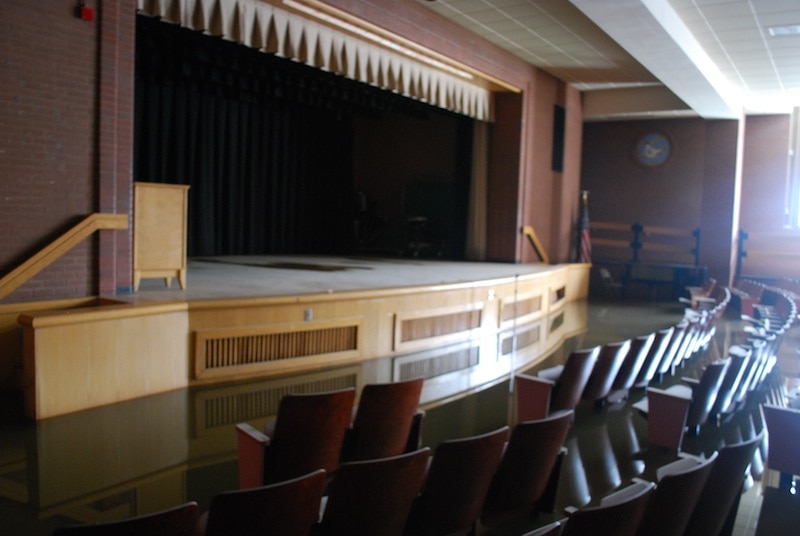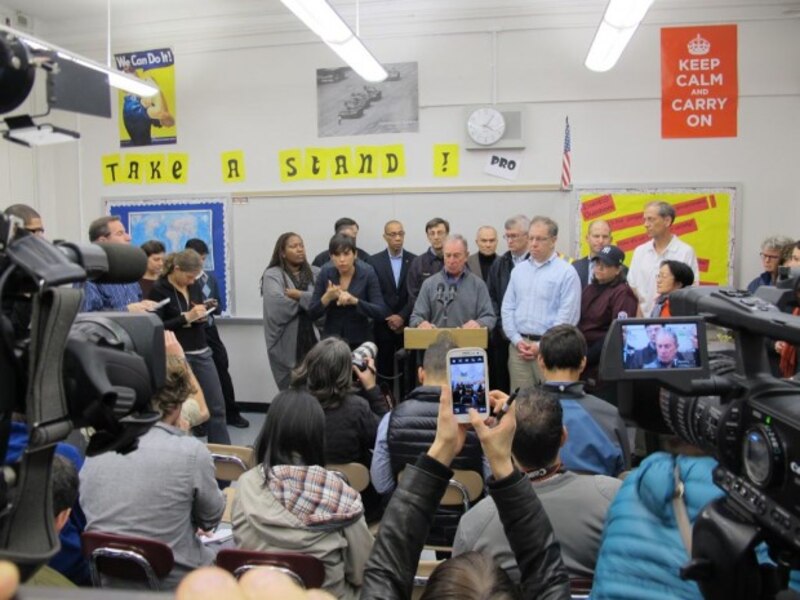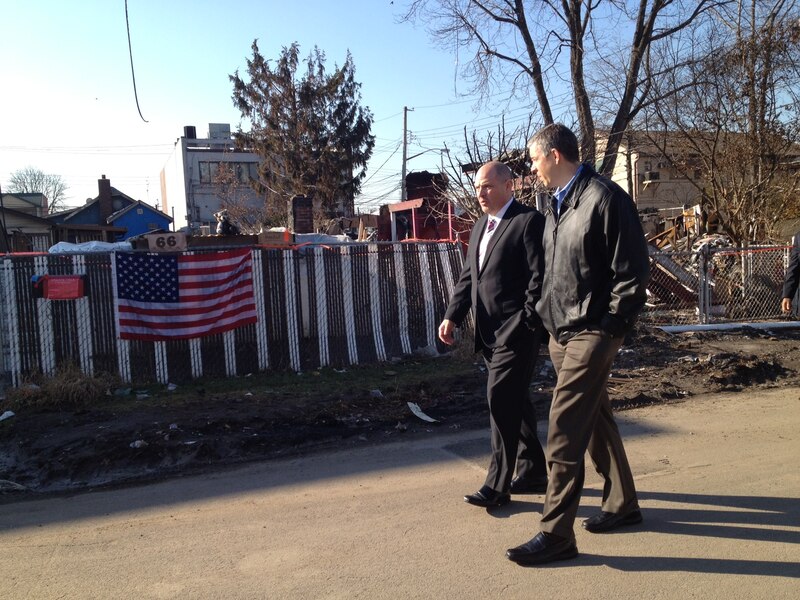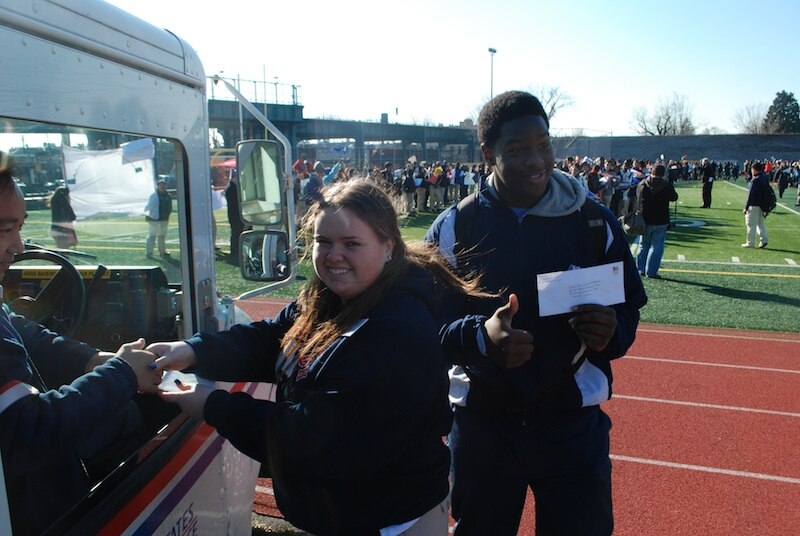When Superstorm Sandy struck New York City six months ago, it hobbled the school system along with the rest of the city. We look back at half a year of physical, psychic, and academic recovery for the city’s schools.
Landfall:

On Oct. 26, as Sandy bore down on the region, school budgets were the big news.
Heading into the weekend, the Department of Education annoyed some families by canceling a Sunday administration of the Specialized High Schools Admissions Test. But as the storm made landfall, it became clear that Sandy was more powerful than expected. Coastal areas were flooded, large swaths of the city lost power, and 43 New Yorkers were killed. Among them was a Bushwick School for Social Justice teacher from a family of longtime education advocates.
The immediate aftermath:

Schools were closed for a week as the Department of Education surveyed the damage. In the first complete census of damage after the storm, officials said 200 of the city’s 1,400 school buildings had suffered damage — some severely, others amazingly not. Yet with the city still paralyzed by the storm’s effects, they worked to reopen schools quickly. One week after the storm, the city had a plan: 65 schools would relocate and share space while their own buildings were being repaired, a plan that required 10 percent of students to have more time off and officials to ward them away from their schools. Other schools would reopen without heat.
Helping hands:

From the very start, helping schools recover was a team effort. Educators worked to find families and meet their needs. On Election Day, when schools were closed, some schools earmarked part of their traditional bake sale earnings for Sandy relief. Donations rolled in from across the country, including directly to educators whose students needed an extra boost after the storm. Even U.S. Secretary of Education Arne Duncan visited the city to tour Sandy-struck schools on Staten Island, where he promised relief.
The city’s typical tensions evaporated as everyone, even adversaries, pitched in to help schools rebuild and families get back on their feet. Instead of resenting having to share space, as they sometimes do, principals worked together to accommodate displaced schools. Although they had been in the middle of tense negotiations when the storm hit, the city and union quickly struck a deal to safeguard teachers who were displaced and to choose days to make up the missed time. The union also rallied its members to volunteer in hard-hit areas of the city and lent a portion of its teachers pension fund to be used for infrastructure repair.
Getting back on track:
Even while schools were still closed, the Department of Education was urging those who could to learn at home, and the city asked educators to return to work before schools could open for students. But instructions about where to report did not come until late on the night before the teacher workday, and transportation issues made the day hard for many to use productively. When the Panel for Educational Policy used its planned agenda for its regular meeting 10 days after the storm, some questioned whether the city was moving too fast.
Once classes started again, attendance was low, with some students in the hard-hit Rockaways simply not in class at all, in part because of transportation issues. A pep talk meant to get football players at the Beach Channel Campus ready to return to the field brought many of them to tears instead, in a dramatic show of students’ trauma. To make it easier for students to get back on track, the city relaxed some enrollment rules, trimmed down the February vacation week to restore instructional days, and gave students the option to learn online. By this spring, officials were ready to say that the tumultuous year shouldn’t stop students from taking the state’s annual tests.
Lasting damage:

Slowly, over the course of two months, damaged buildings reopened. Still, even now, the education department is waiting on the Federal Emergency Management Authority to fund remaining repairs. And students, teachers, and families are still feeling the lasting effects of a traumatic experience. Even schools that had a burst of energy shortly after moving home are dragging this spring.
“They wanted to do a story about thriving schools,” Channel View for Social Research teacher Craig Dorsi told GothamSchools about a television crew that approached the school recently. “We were like, are you freaking crazy? We’re not thriving. The reality is that the world is still upside down.”
